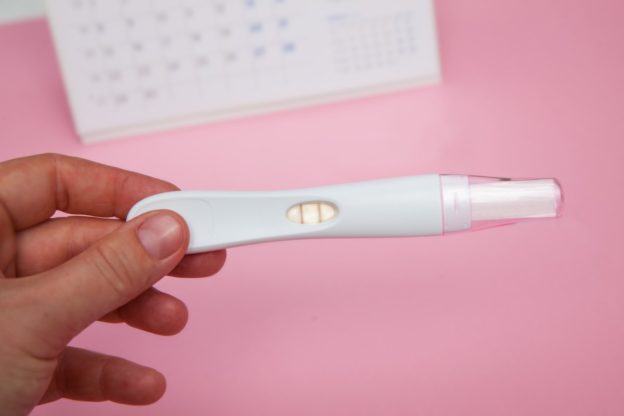Whether you are trying to conceive or prevent pregnancy, it’s important for a woman to understand her body. The menstrual cycle is not the same for every woman; however, taking the time to
understand your cycle and how your body works can help you take more control over your body. Fertility Awareness Methods (FAM) can help you understand
when you are most fertile and can even track your ovulation days each month. What are the fertility awareness methods? How effective are they? What are the pros and cons of these methods? Here’s what you need to know about FAM and whether they are right for you. What Is Fertility Awareness? Fertility Awareness Methods (FAM), sometimes referred to as natural family planning or the rhythm method, are a combination of practices that help people determine when is the best time to conceive a pregnancy. How Does the Fertility Awareness Process Work? Fertility Awareness Methods work to predict the fertile and infertile times in a woman’s cycle. Using body signs, which change during each menstrual cycle, you and your
doctor can narrow down the exact days you will be ovulating (when an ovary releases an egg). FAM can be used to prevent pregnancy, or get pregnant, but if it is used as a method of birth control, you must abstain from intercourse (especially on your fertile days), or use another form of barrier contraceptive to prevent getting pregnant. FAM cannot be properly tracked while on birth control pills, as they prevent the body from going through its natural hormonal changes for ovulation. However, for FAM to be effective, it relies on the following assumptions:
- An egg is usually released once each menstrual cycle
- The egg lives for 12-24 hours
- Sperm can live up to five days in the uterus and is there long enough to meet the egg
- A woman can get pregnant for as many as six days before ovulation and two to three days after ovulation
The Different Types of Fertility Awareness Methods There are different types of Fertility Awareness Methods that have proven to be successful on their own, or when combined with other methods. Some of these methods include:
- The Basal Body Temperature (BBT) Method: Take your temperature first thing in the morning every day before getting out of bed.
- The Calendar Method: Monitor your menstrual cycle using a calendar or app.
- The Standard Days Method: This is a variation of the calendar method. You track your cycle over several months to find out if it is always between 26-32 days long. If it is in this range, you use a barrier method on days 8-19, which are your fertile days.
- The Cervical Mucus (Billings) Method: Check your cervical mucus every day to test its consistency and average where you are in your cycle.
- Combined Method (Symptothermal): The most effective method out of all of these is to combine them together.
- Hormone Monitoring: This method involves using home ovulation kits to determine the most fertile days of your cycle. The kits test for your level of luteinizing hormone (LH) in your urine, which shows if you have ovulated.
Effectiveness of FAM and How to Improve Them Since FAM include various methods and depends on multiple factors, its effectiveness depends on each individual. Depending on these varying factors, FAM can be 77% to 98% effective. You can improve your FAM to be more effective by doing the following:
- Working with a counsellor, nurse, or doctor who is an expert with FAM to help you understand how to use them correctly
- Taking the time and being diligent to check your fertility signs and chart your cycle daily
- Agreeing with your partner to abstain or use other birth control during your fertile days if you want to prevent a pregnancy
Advantages of Using Fertility Awareness Methods With concerns about how birth control pills and other forms of contraception impact fertility in the long-term, Fertility Awareness Methods have become more popular. There are even mobile apps that collect information about your basal temperature and help you pinpoint your ovulation date with greater accuracy. Here are some of the advantages of fertility awareness methods:
- Inexpensive
- No health risks
- Convenience (no hormones or devices to use, other than a thermometer in some cases)
- May fit with faith-based and cultural vales
- May improve communication, cooperation, and responsibility for both partners
- May help determine the best fertility time to get pregnant
- May help to track and improve symptoms of PMS
Disadvantages of Using Fertility Awareness Methods The challenge with FAM is that they can be tricky, as the effectiveness depends on each person. Women with irregular cycles may find it more difficult to accurately track their follicular phase, ovulation, and luteal phase
each menstrual cycle. Here are some of the disadvantages of fertility awareness methods:
- Higher failure rate
- May be difficult to accurately predict ovulation or fertile times
- Requires commitment from both partners for effectiveness
- May decrease spontaneous intercourse
- Does not protect against STIs
- Only effective if contraception (abstinence or condoms) is effectively used during fertile times
Fertility Services at One Fertility Kitchener Waterloo If you’ve been having a difficult time getting pregnant or want to pinpoint the best time to conceive, we can help.
ONE Fertility Kitchener Waterloo believes in the importance of providing our patients with proper, comprehensive information about their options, so they can get customized treatment that works for them. Our evidence-based medical approach and compassionate care ensure that our patients understand their treatment plan throughout the entire process and receive safe and high-quality fertility treatment with high success rates. Contact us at
(519) 650-0011 or
info@onefertilitykw.com to learn more about FAM and see if it’s right for you. We offer our services to patients from
Kitchener-Waterloo,
Guelph, Cambridge, Woodstock, Listowel, Fergus, Elmira, Milton, Owen Sound, and other areas of Ontario.





